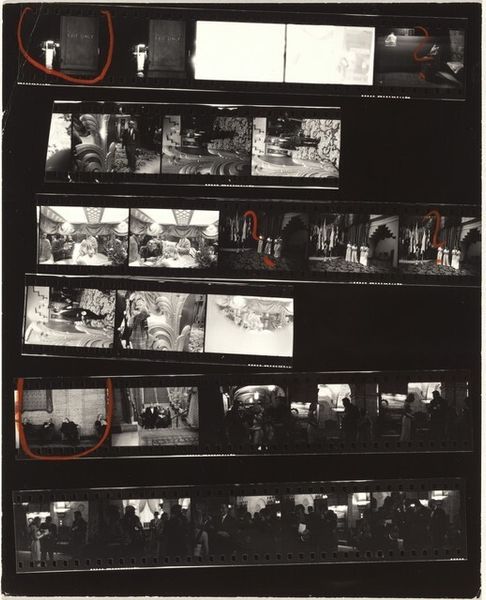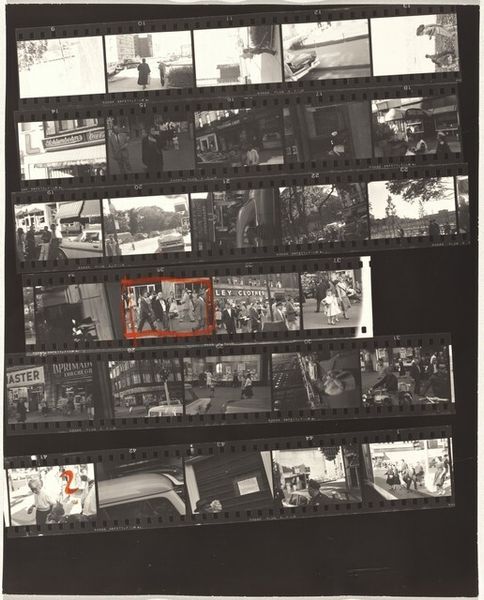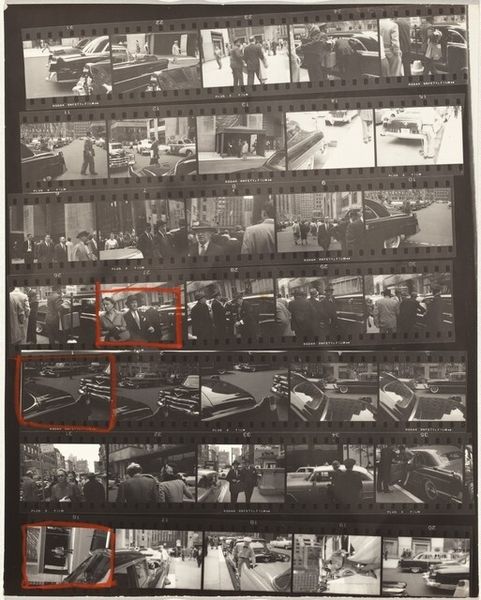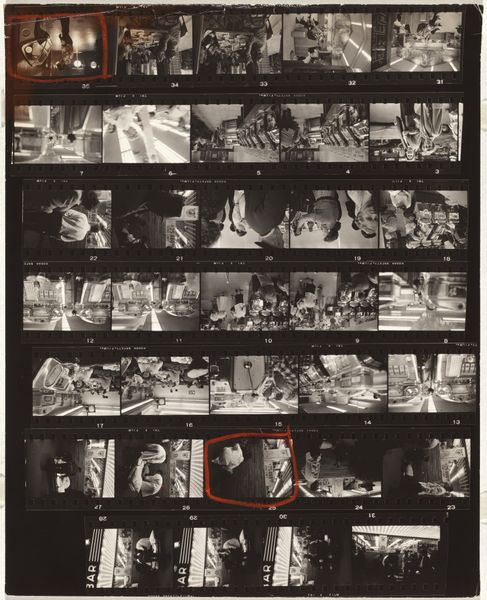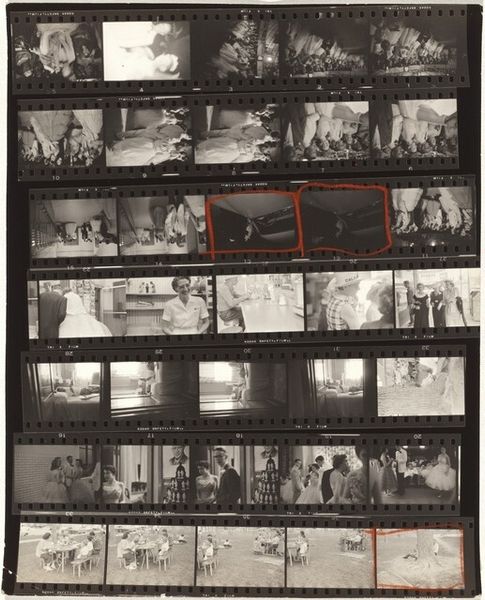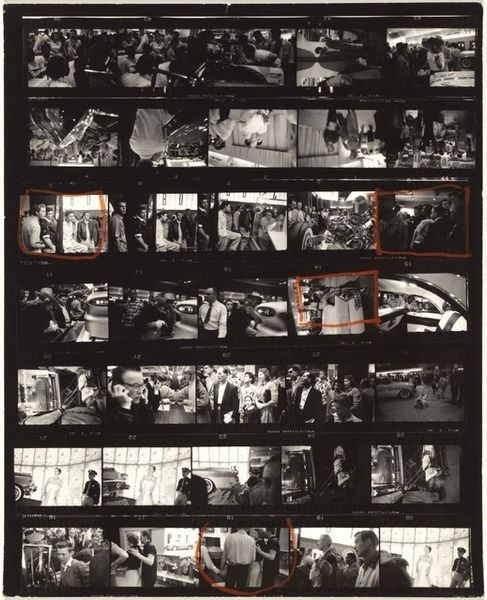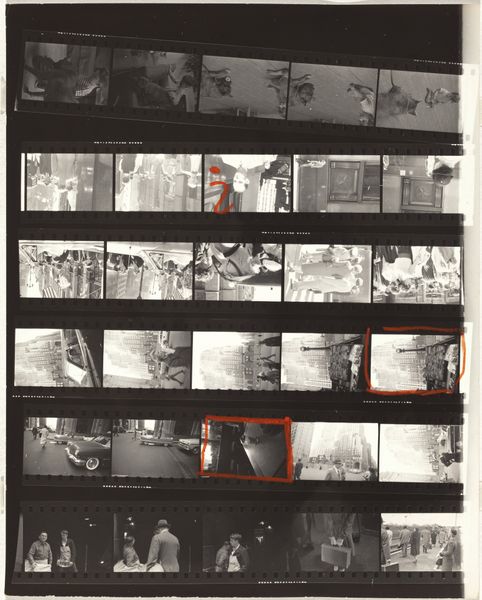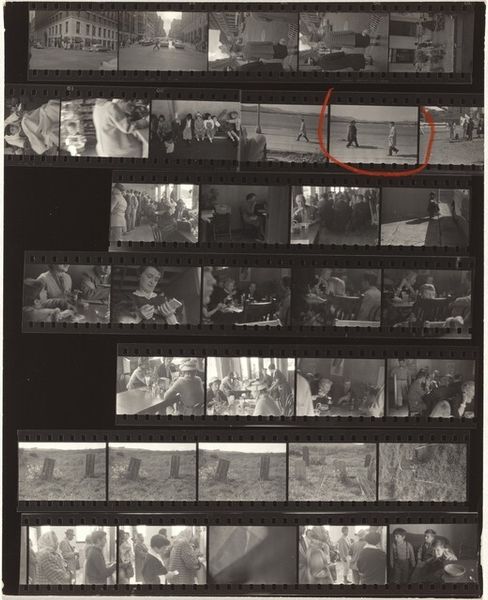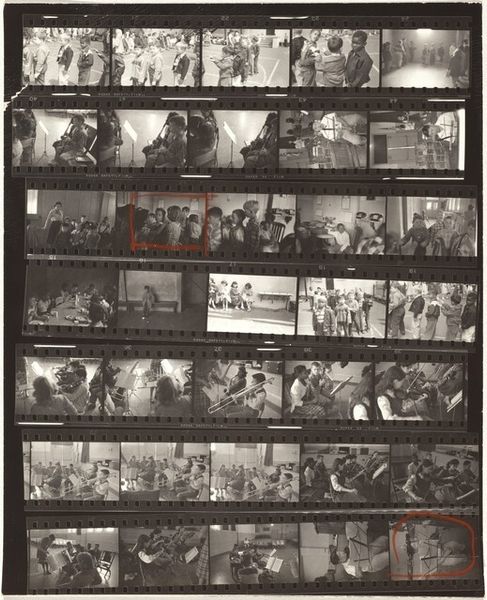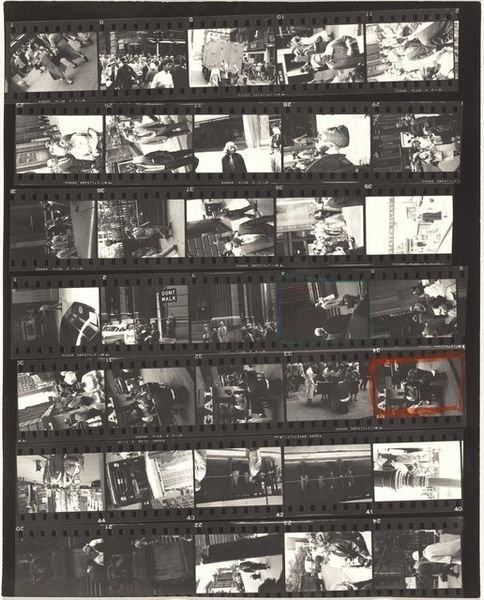
#
excavation photography
#
competition photography
#
film photography
#
outdoor photography
#
culture event photography
#
couple photography
#
holiday photography
#
outdoor activity
#
film
#
celebration photography
Dimensions: overall: 25.3 x 20.3 cm (9 15/16 x 8 in.)
Copyright: National Gallery of Art: CC0 1.0
Editor: This is Robert Frank’s "Guggenheim 131/Americans 10--New York City" from 1955, a contact sheet showing multiple frames from a film roll. It feels very raw and immediate, offering glimpses into everyday life. What kind of narrative do you think Frank was trying to construct with this presentation of images? Curator: I think Frank used the contact sheet to directly confront established photographic conventions. The gritty aesthetic and snapshots of ordinary Americans challenged the idealized images prevalent in the media, a conscious act of resistance to the dominant visual culture. The rawness wasn't accidental; it was a political statement about who gets seen, and how. How do you perceive its connection to social issues of the time? Editor: I see the potential for social commentary, but what were the key tensions in 1950s America that Frank was responding to? Was it a reflection on consumerism, racial inequality, or something else entirely? Curator: All of the above, to an extent. The decade masked a lot of social unrest beneath a veneer of prosperity. Consider the lack of representation of marginalized communities in mainstream media back then, and then consider Frank’s work, placing them front and center. Do you think its reception was impacted by that decision? Editor: Definitely. Presenting unseen narratives of disenfranchised individuals would have definitely ruffled some feathers back then. I had not considered this an act of resistance as much as simply capturing candid moments, so, I see now that this seemingly spontaneous photography in reality reflects a critical examination of power structures. Curator: Precisely. By capturing these "unseen" narratives and presenting them in a raw, unpolished style, Frank forced viewers to confront the realities of American society beyond the glossy magazine spreads. Editor: Thinking about it that way really makes me appreciate how groundbreaking Frank's approach was and how much it changed how we think about photography’s role in social commentary. Thanks for enlightening me on that.
Comments
No comments
Be the first to comment and join the conversation on the ultimate creative platform.
